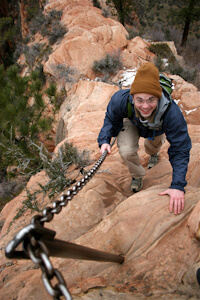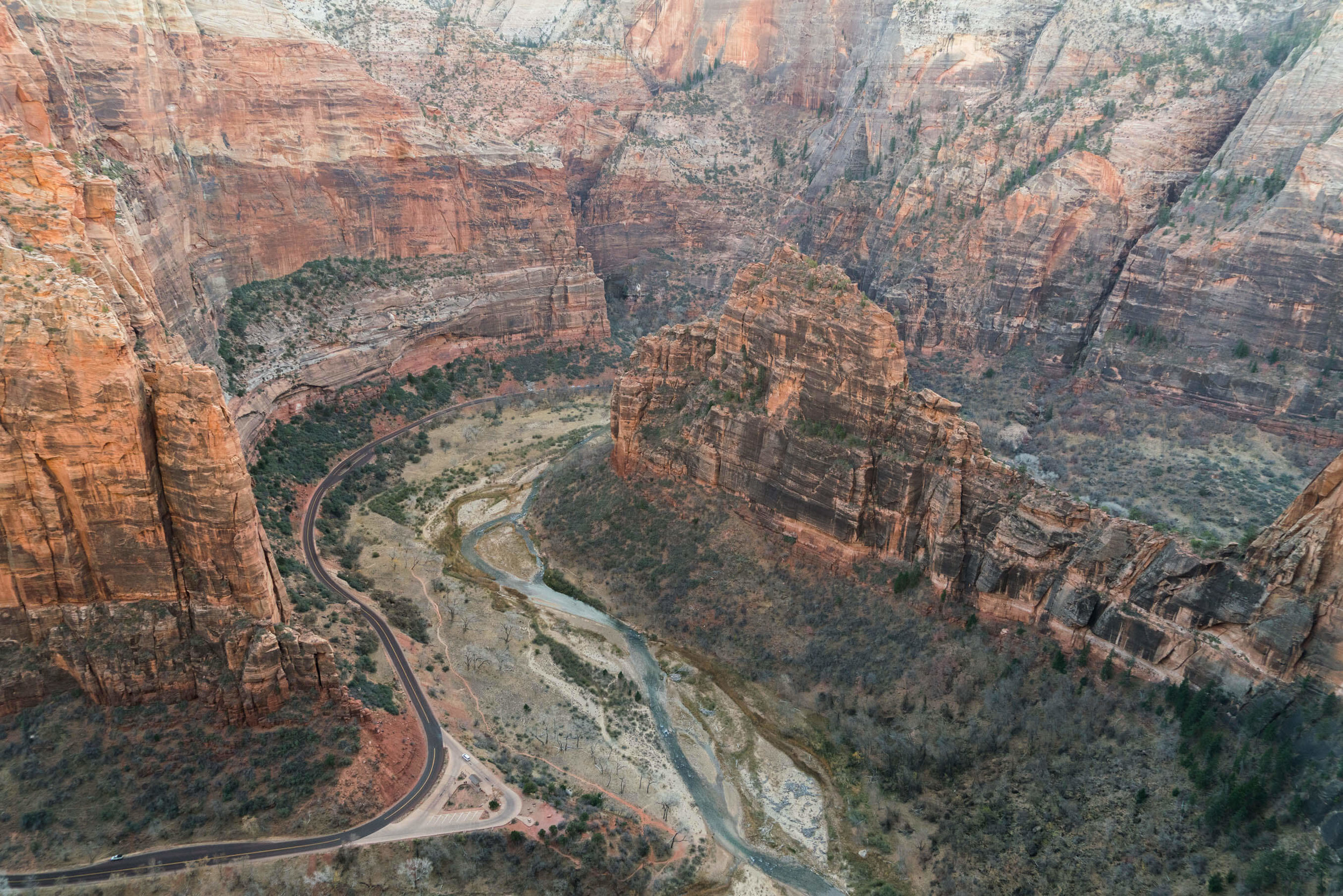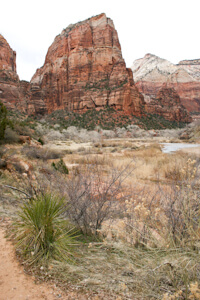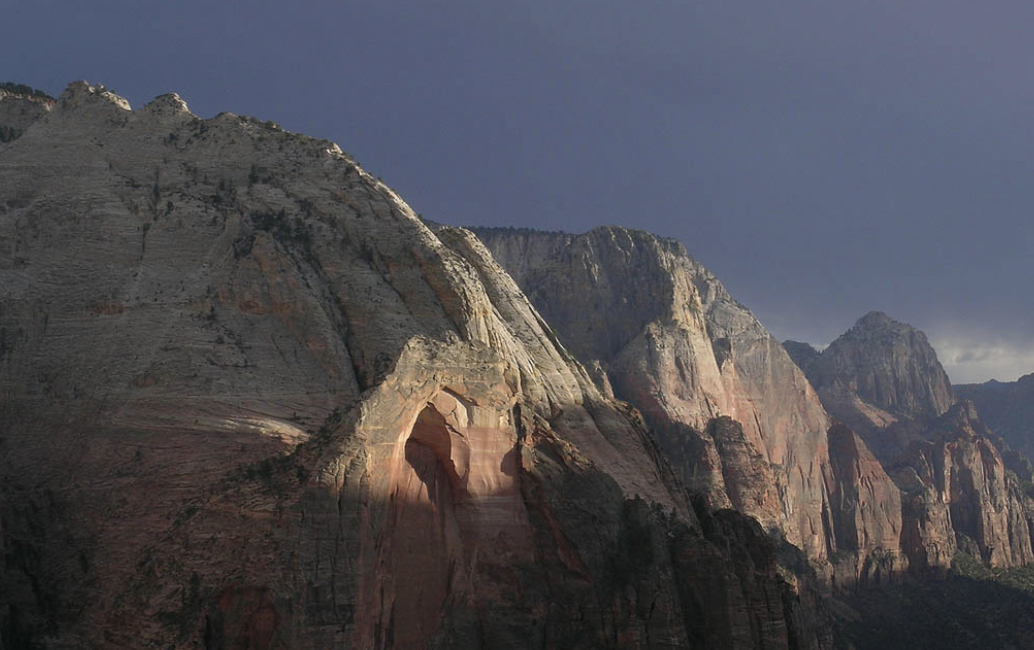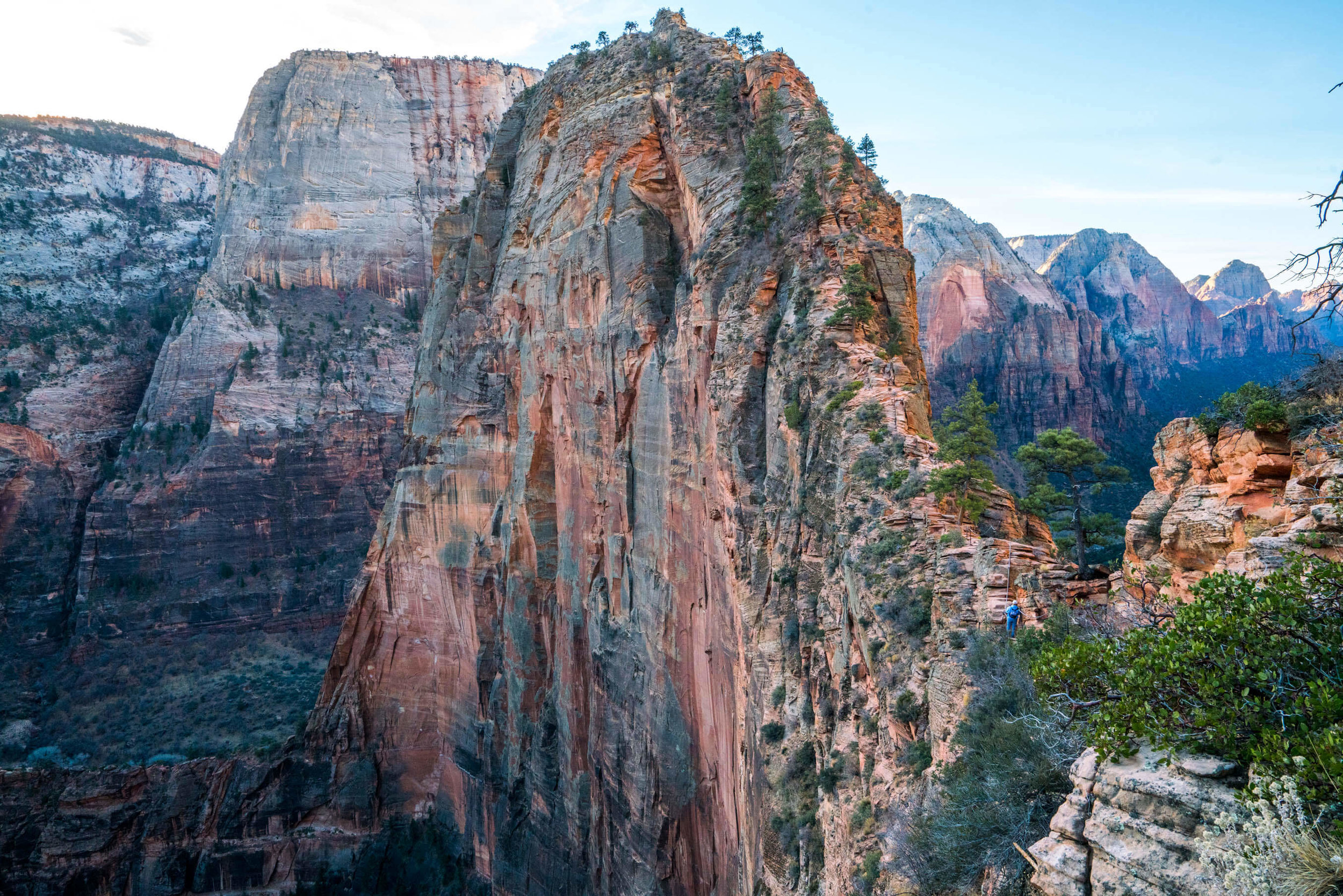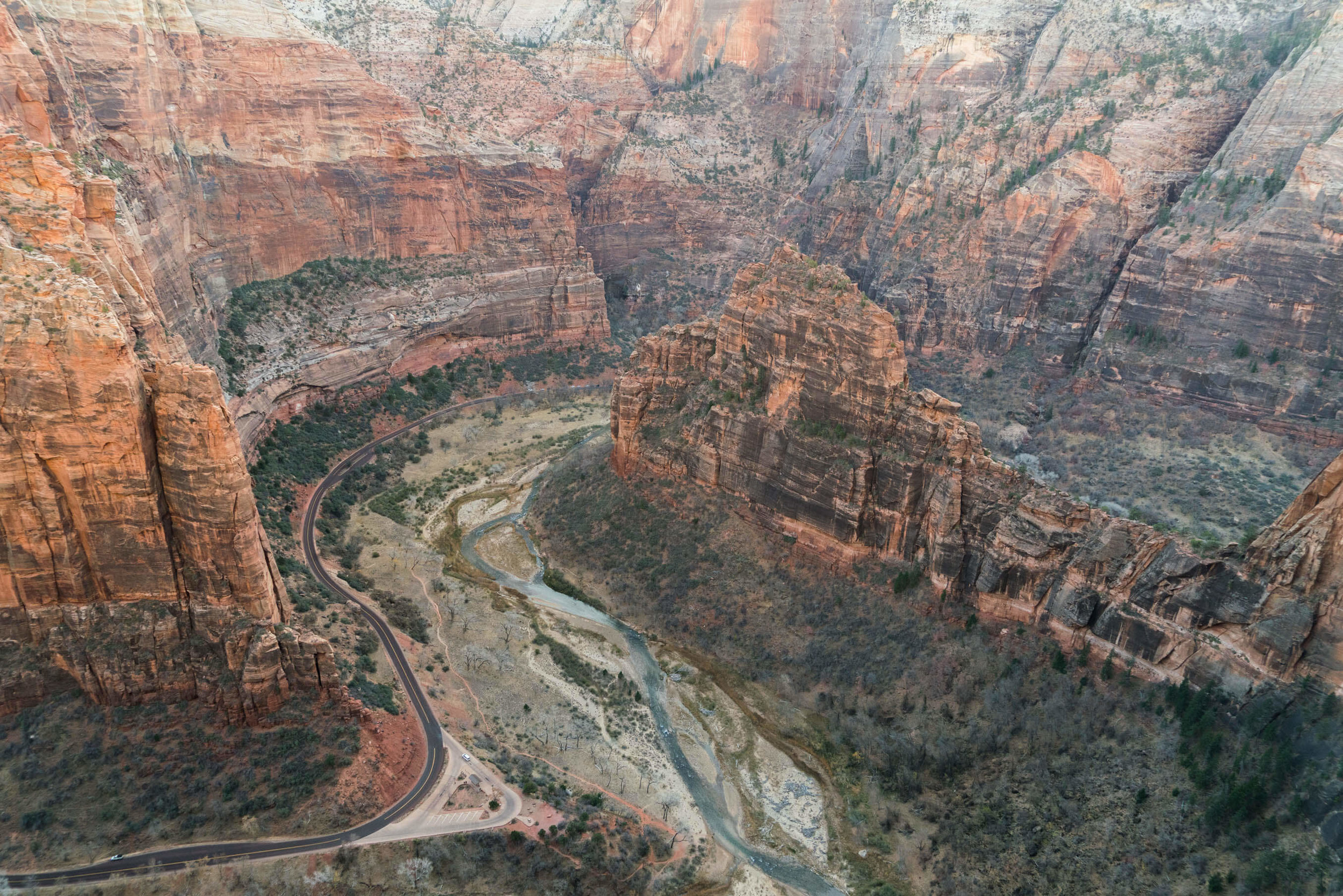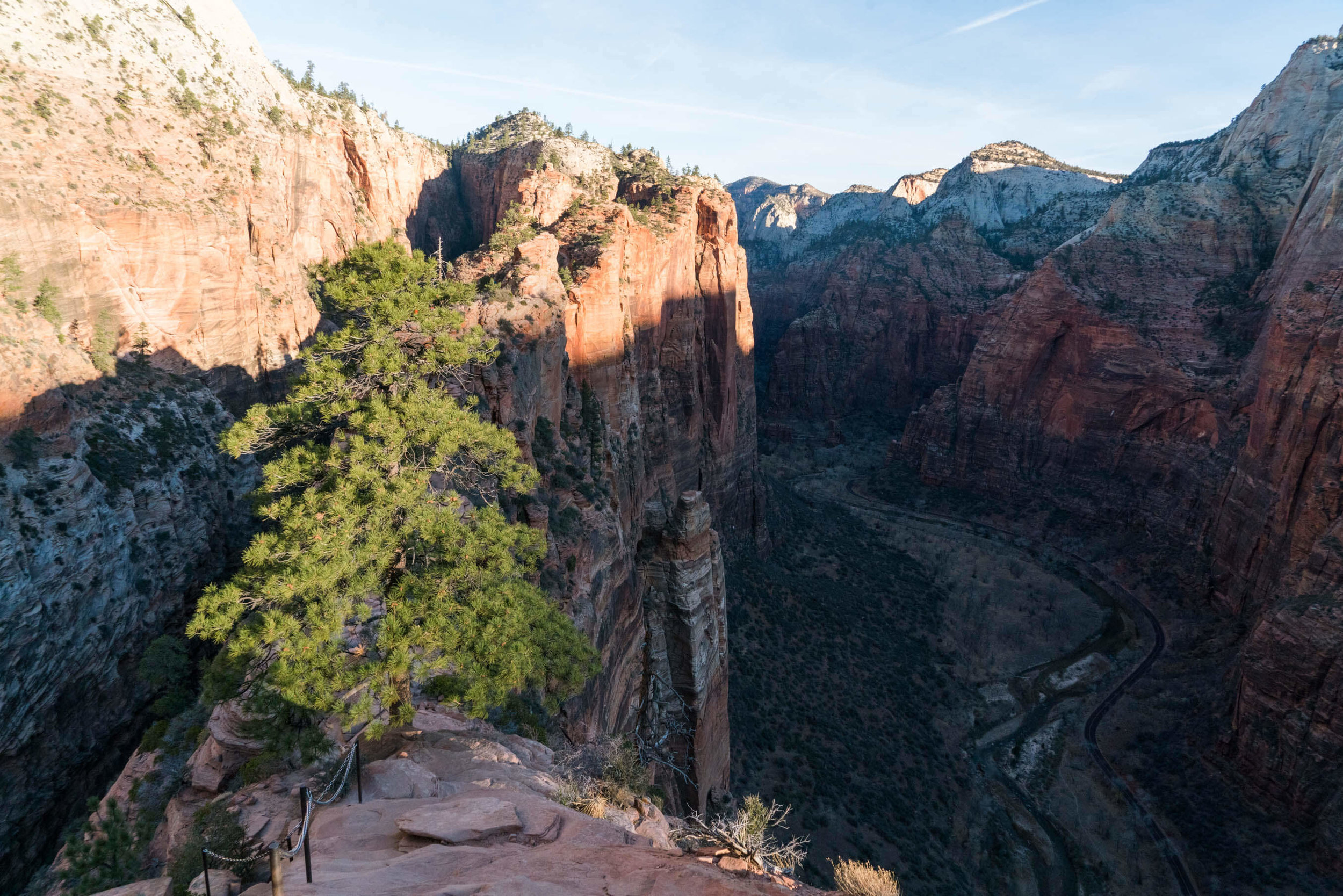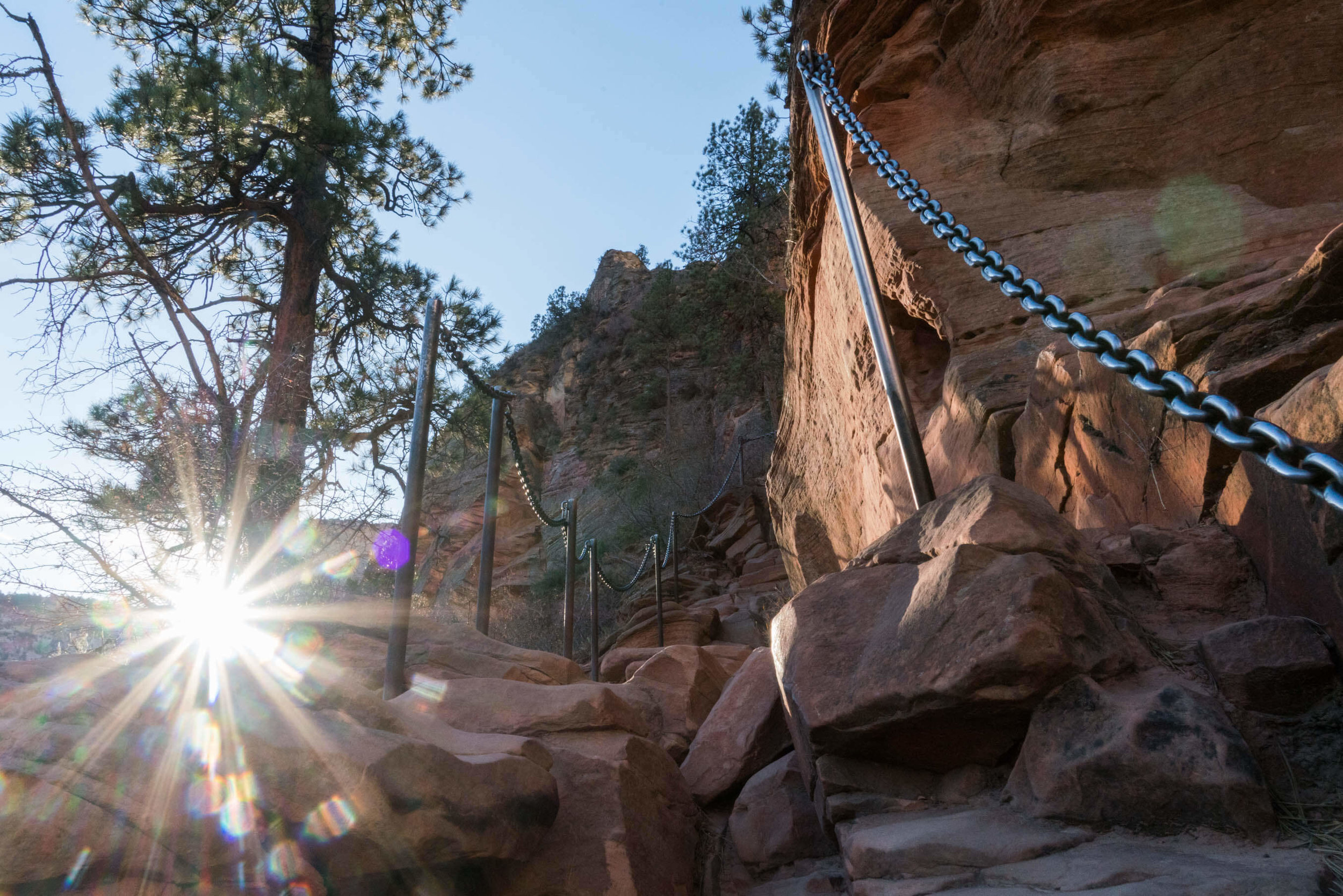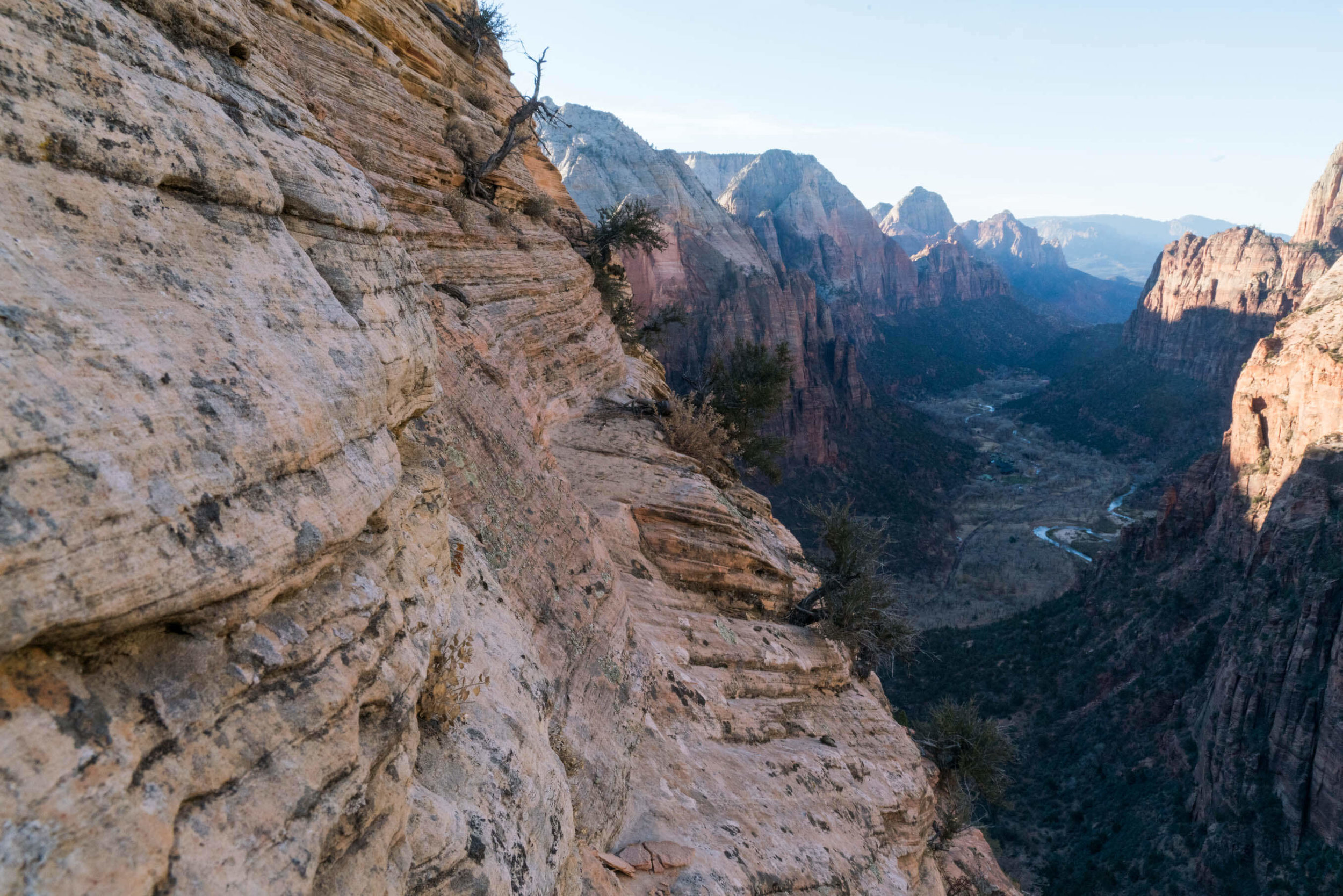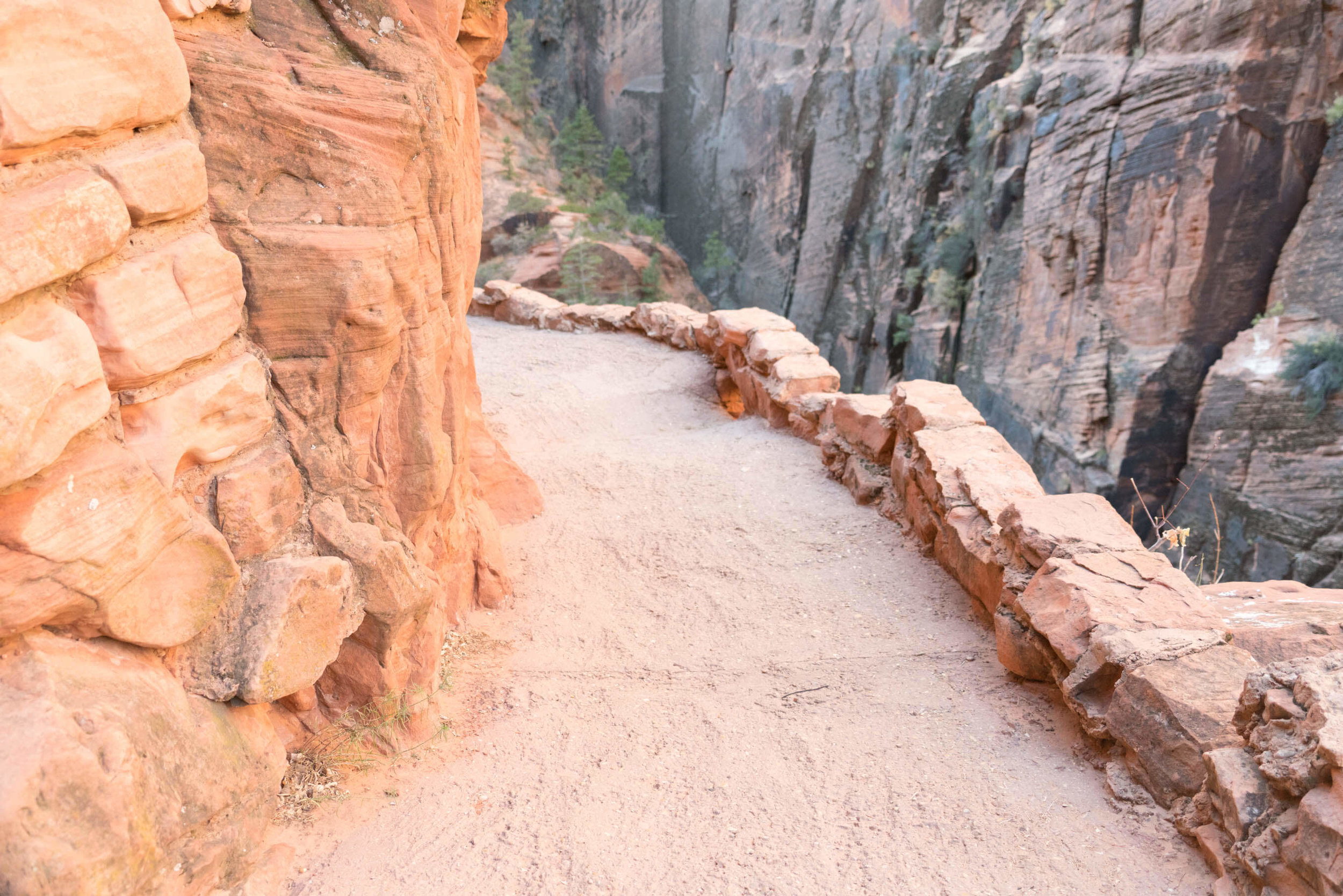High & Exposed.
Is Angels Landing Zion National Park's easiest rock climb, or its most thrilling hike? Legend has it Angels Landing received it's name when Frederick Fisher, exploring Zion with friends in 1916, exclaimed, "Only an angel could land on it!" Ten years later, Thomas Chalmers Vint and Walter Ruesch, both Park Service employees, planned and led construction of the Angels Landing Trail as an extension of the existing West Rim Trail. An impressive feat of trail-building, the trail was listed on the National Register of Historic places in 1987.
Angels Landing is one of the most exciting, intimidating, and famous trails in the National Park Service. In many places, steps were hewn out of the rock and thick chain installed along the knife-edge ridge to provide security for the non-mountaineer. Many find the final ridge too much, and wait at the "Widow's Tree" for their companions to return from the summit. Those who continue to the top will enjoy amazing views of Zion Canyon, from a lofty perch.
hike Profile
Logistics

RATING
Moderately strenuous hike. If hiking the chained section beyond Scout's Lookout, the route is very exposed and NOT for acrophobes or small children.

TIME REQUIRED
3-5 hours

SEASON
Year-round

LENGTH
2.4 miles (3.8 km) each way

ELEVATION GAIN
1500 feet (450 m)

ACCESS
Starts and finishes at the Grotto Trailhead. Accessible via shuttle April through October.

SHADE
Most of the hike is in the full sun, except for the section winding through Refrigerator Canyon. The lower trail is shaded in late afternoon.
Equipment

ESSENTIALS
Sturdy hiking shoes, ample water, and food for a full-day hike.

DRINKING WATER
Drinking water available at Grotto Trailhead; make sure to fill up there.
DIFFICULTIES

CONSIDERATIONS
There is significant exposure to cliff edges along the final 0.5 mile stretch. Many people hike only to Scout's Lookout, the (excellent) viewpoint before the committing, exposed trek on the chained sections.
Seasonal Adjustments
SPRING: A great time to hike Angels Landing. Zion National Park CAN have snow/ice storms in March and April, but any snow typically melts within a day or so.
SUMMER: Can be quite HOT! Bring plenty of water and try to leave early in the day, when the air is cool and you have the trail to yourself. Crowds of hikers often develop between 9 AM and 5 PM.
FALL: Like most places in Zion, autumn might be the best time to hike Angels Landing. Lucky hikers can find colorful maples in Refrigerator Canyon, and yellow cottonwoods lining the Virgin River corridor below.
WINTER: Ice and snowpack can accumulate on the trail, especially after storms roll through. Yaktrax or some sort of extra shoe traction may be helpful. Travel along the chains in not recommended when ice and snow is present.
Getting there
Angels Landing is approached via the West Rim Trail. Start at The Grotto picnic area and shuttle bus stop.
The Grotto was, for many years, the center of activity in Zion. The first ranger cabin was built here, at the end of the road. This used to be THE campground, so if you are in South Campground, and wonder where North Campground was... it was at The Grotto. The small, stone building at The Grotto is the oldest building in the Park, built as the Park Museum in 1924, then remodeled as a residence in 1936 with CCC labor. There is an unadvertised alcove and spring 1/4 mile (400 m) southeast of the shuttle stop.
The lower section of the West Rim Trail was immortalized in Clint Eastwood's classic film, "The Eiger Sanction".
Inspired hikers may link the Emeral Pools hike with the Angels Landing Trail via the Kayenta Trail, a flat, one-mile connector that unites the two trails. The Kayenta link starts behind two large boulders between the Lower and Middle Emerald Pools, and ends at the suspension bridge at the Grotto.
The Hike
Cross the road and take the suspension bridge across the river. Turn right. The trail is initially flat, following the river bench, but soon starts switchbacking up the steep, south-facing hillside. The trail gets steeper, until it actually cuts into the cliff face, climbs around a buttress, and enters the cool shade of Refrigerator Canyon. Halfway there.
Enjoy the frigid air of Refrigerator Canyon. All too soon, the trail starts climbing again, up the 21 constructed switchbacks of infamous Walter's Wiggles, named for Zion's first superintendent, Walter Ruesch. At the top of the Wiggles, the trail comes out to a sandy area at the top of the ridge known as Scout Lookout. The West Rim Trail turns left and heads north up the ridge. The Angels Landing Trail follows the knife-edge south. Pit toilets are available a short walk to the north, but they are not always open during the off-season.
Hike south along the ridge. Spectacular views of the North Face of Angels Landing are hard to miss. After climbing a warm-up bump on the ridge, the trail really gets Western. A combination of carved steps and fixed chains provide extra security as the trail works up the knife-edge ridge to the top. False summits abound, teasing you along the way. Enjoy the 360-views atop the summit, but please resist any urge to contribute to the rock graffiti. Return the way you came.
Trip Reports
Maps
Click for higher resolution


